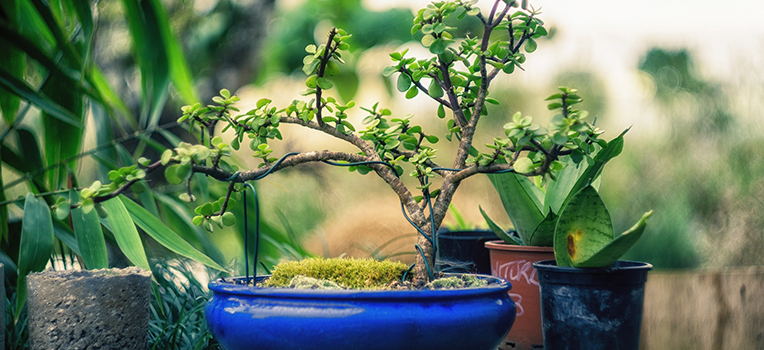How to create your own bonsai
Bonsai is an intriguing and creative hobby. At its simplest level, a bonsai is a small plant growing in a shallow container, but for those who create bonsai plants, specimens are works of art often created to form traditional shapes.
This style of gardening began in China more than 2000 years ago and spread to Japan in the 12th century. It is now appreciated around the world.
Many people are captivated by the art of bonsai when they are given their first bonsai as a gift. If the miniature plant captures your imagination you may seek to acquire more, investigate bonsai care, or decide to learn how to create your own.
The most important thing to know about caring for a bonsai plant received as a gift is that it is an outdoor plant, not a plant to display indoors for more than a day or two.
The best situation to display bonsai plants is on a stand or shelf in a brightly lit spot in a garden where they can be accessed daily for care and can be viewed and enjoyed.
Bonsais do require special care as they are prone to drying out due to their shallow root system in often small, shallow containers. Bonsais are affected by the same pest and disease problems that could affect plants growing as mature specimens.
Plant selection
Just about any plant can be crafted into a bonsai specimen but shrubs and trees are popular choices. While some bonsai growers start with seedlings many also collect potted plants or even transplant garden specimens that are then pruned and trained to form a bonsai shape. There are many traditional styles to replicate but bonsai is also an art form that encourages personal expression.
Bonsai specimens are grown from evergreens such as conifers, maples (particularly Japanese maples), cherries and other deciduous trees, azaleas and wisteria. Bougainvillea and many Australian native trees, including native figs and shrubs can also be grown successfully as bonsai plants.
Getting started
To create a bonsai, select a small plant with an interesting shape that includes several branches and a trunk that may be bent, curved, gnarled or look aged.
The aim is to produce plants that look mature despite their petite size. A plant in a 20cm pot that has been left unplanted and appears misshapen may be an ideal choice.
Many bonsai enthusiasts collect promising plants from the bargain bin at garden centres, nurse them into good health and then turn them into bonsai.
To transform the plant into a bonsai you need a shallow bonsai pot, a free-draining potting mix, scissors or sharp secateurs, wire to secure the plant in the container, and a small piece of mesh to cover the drainage hole to prevent loss of potting mix.
Most garden centres stock bonsai containers and accessories. These shallow bowls should have one or two large holes in their base and usually smaller holes to insert wire supports.
- Work on a bench in a sheltered spot. Begin by covering the large drainage hole (or holes) with a small piece of mesh (such as fly wire). Place some potting mix in the container.
- Remove the selected plant from its container and hose or brush off its potting mix or soil to reveal the base of the stem and the root structure. Trim the roots to fit into the new container.
- Sit the plant in place, adjusting its position so it is appealing and suits the shape of the container. Revealing the base of the trunk and the top of the root system by planting the specimen higher than it was growing originally may add to the aged look of the plant.
- Secure the root ball in place by inserting wire through the base of the container and through the root system. Twist the wire so the plant is firm and secure. Top up the potting mix, firming it around the root system to remove air pockets.
- Use secateurs or sharp scissors to prune and shape the plant to accentuate its branch shape and imperfections. Some bonsai gardeners use wire to twist or manipulate the trunk and branches into new shapes and positions. Roots may also be trained over rocks. The trunk or branches may be deliberately wounded to give a plant an aged, gnarled appearance.
- To finish off, cover the surface of the potting mix with gravel, moss or artfully arranged stones and water well. As the plant grows, it will need regular pruning and from time to time will require root pruning and repotting.
References and inspiration
There are many books on bonsai, which include excellent photographs of bonsai plants and outline traditional shapes and styles. Also watch out for bonsai exhibits staged by bonsai groups.
Joining a specialist group can help expand your skill and interest in the art of bonsai. Local Sydney groups include Bonsai Society of Sydney or find a club near you at the Association of Australian Bonsai Clubs.

